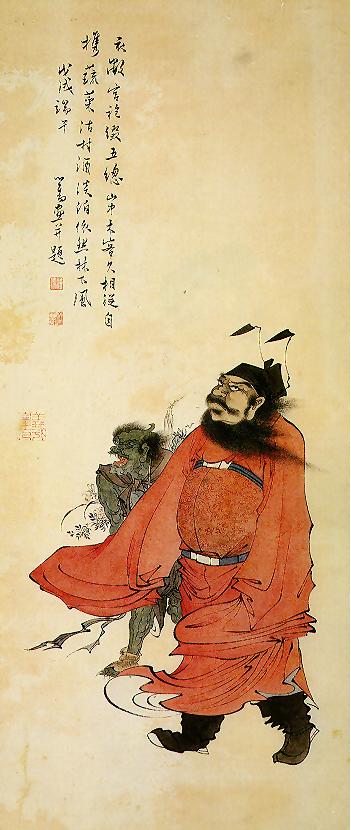Ching Dynasty (1644 - 1911)
In
the late Ming Dynasty and early Ching Dynasty, literati painting flourished with ever
increasing vigor. Two approaches to literati painting developed: one could
either set oneself to the art of careful study, copying the styles of earlier
painters or one could directly express one’s creativity by adopting a posture
of independence. By the middle of the Ching Dynasty, the latter approach had
gained in popularity as painters set themselves to express the individuality of
their personalities. In the late Ching Dynasty, painting, calligraphy, and seal
making were influenced by the Gold Stone (
金石 ) studies, the research of
ancient inscriptions. This brought new vigor and interest to the art.
Quails
(Zhu Da)
Flower
(Jin Nong)
Bamboo
(Zheng Ban-Chiao)

Zhong Kui (Pu Hsin-Yu)
![]()
Landscape (Pu Jin)
Landscape (Zhang Da-Chian 張大千) Zhang Da-Chian (1899-1983) was an internationally renowned Chinese brush painter. He was also well known in poetry and literature. He studied textile dyeing abroad and became an expert of colors. He duplicated many copies from the original masterpieces and was known as a collector and capable pasticheur of paintings of the Ching Dynasty. His duplicated paintings had tricked many connoisseurs and directors of museums.
Zhang with Pablo Picasso
One of Zhang's luxury houses in Taipei, Taiwan
Zhang's paintings in various styles and subjects
|
(Back to History Menu) (Back to Home)